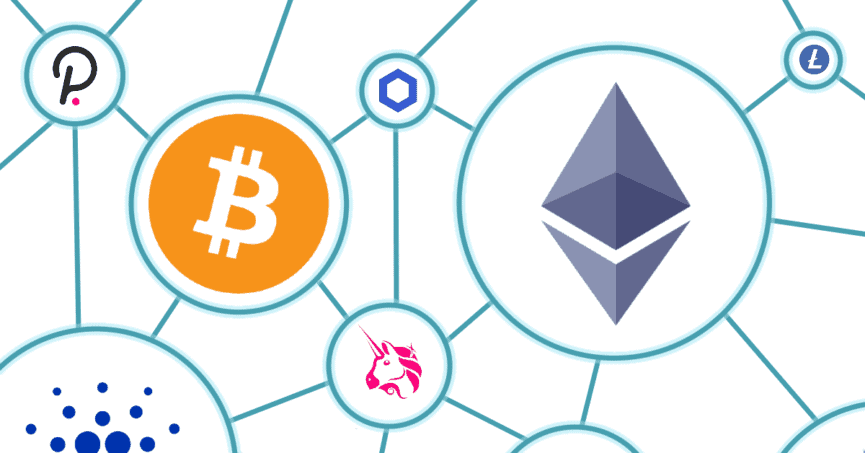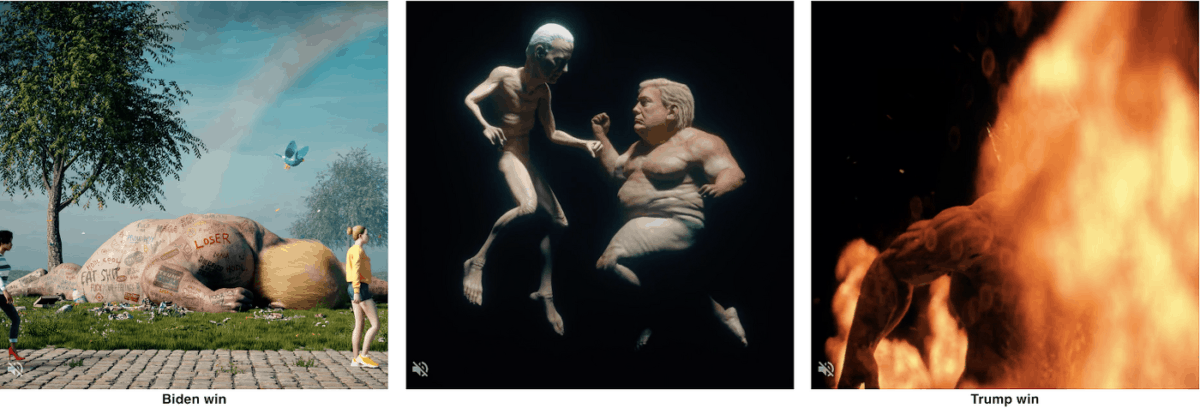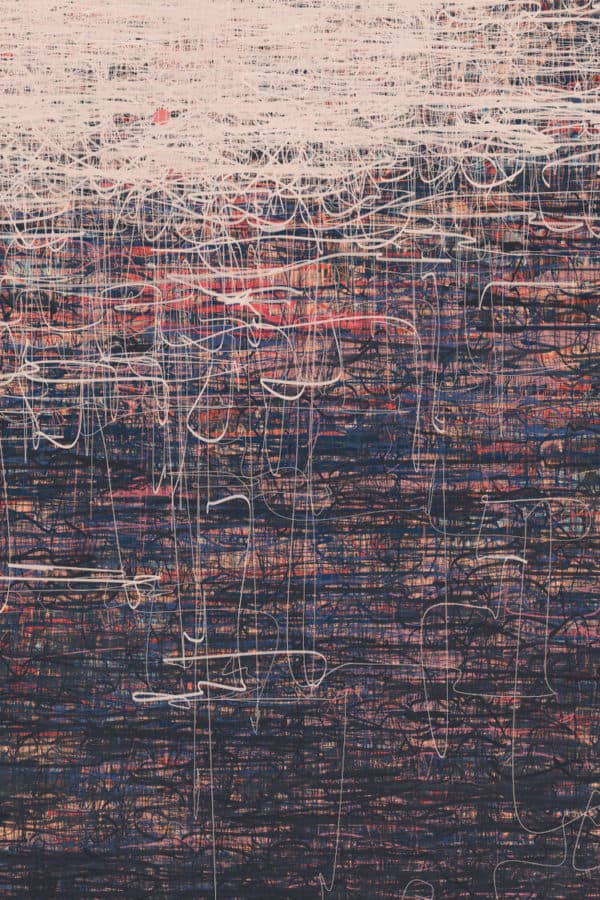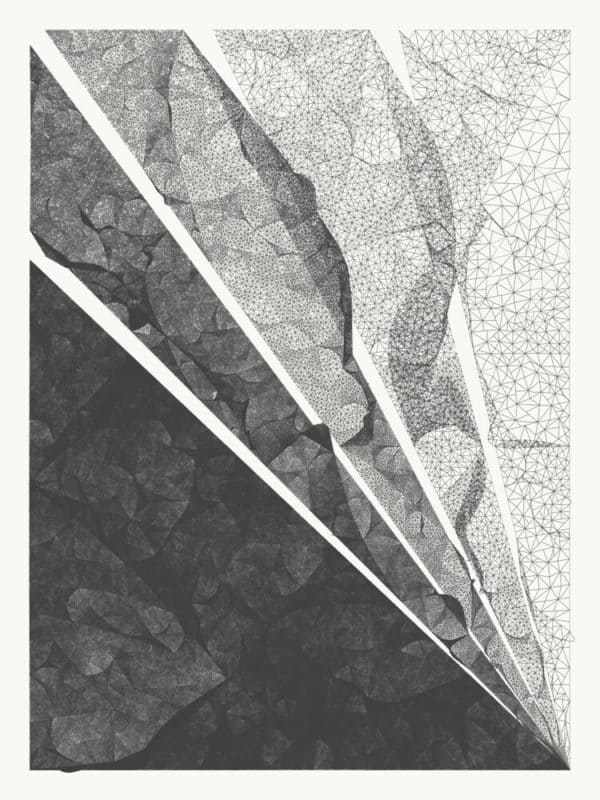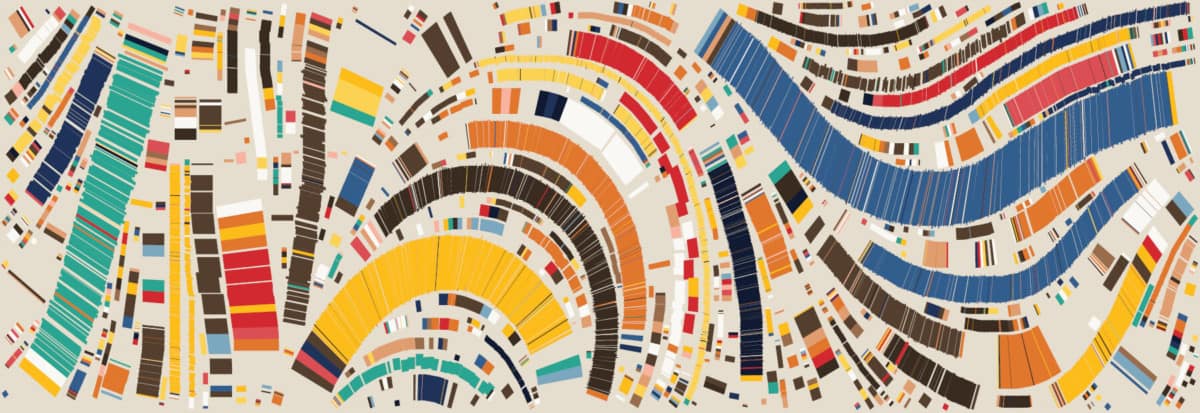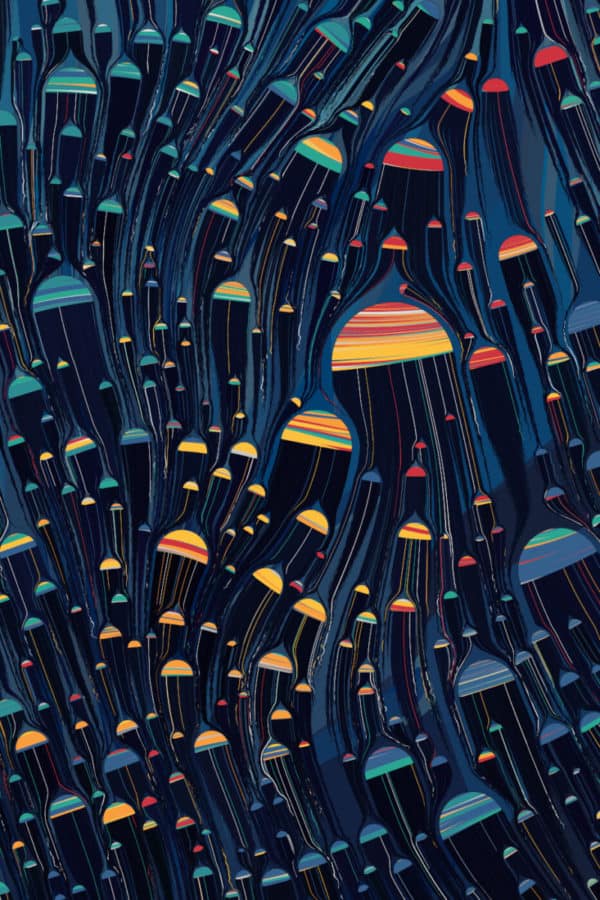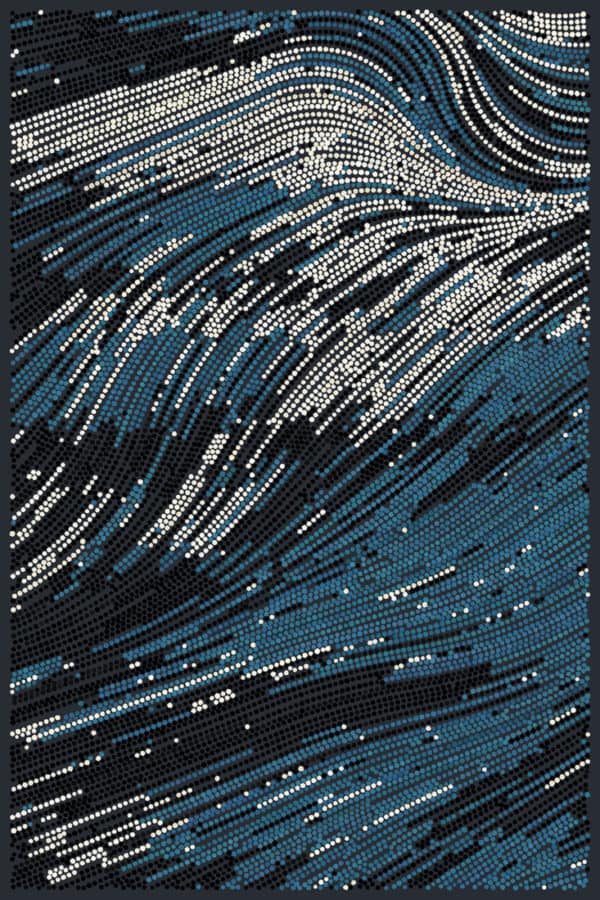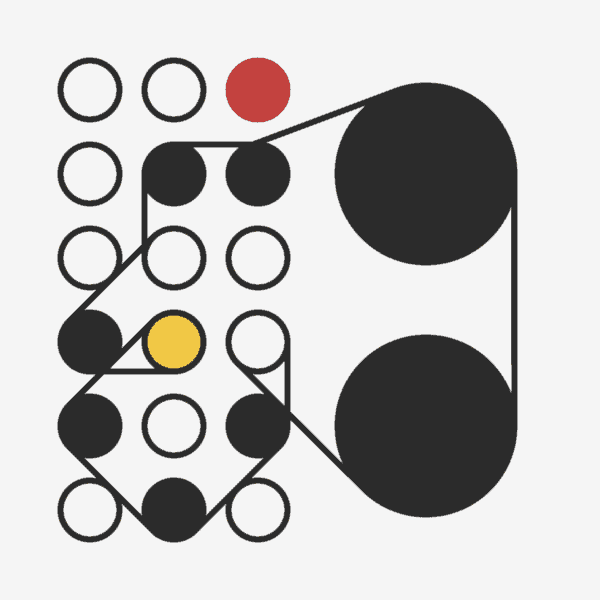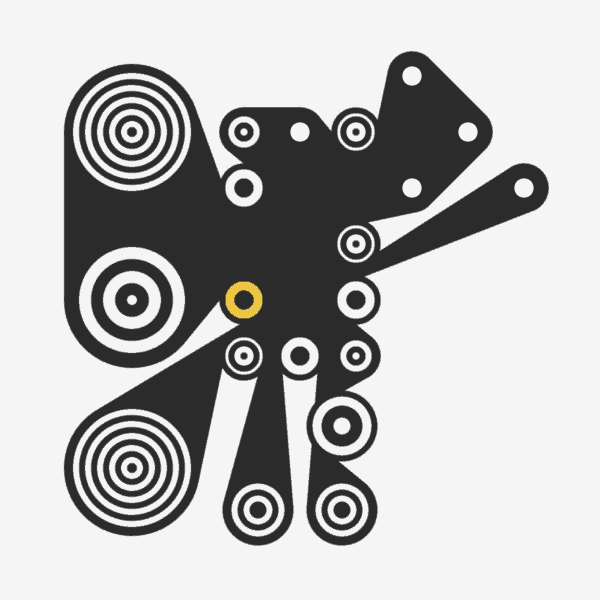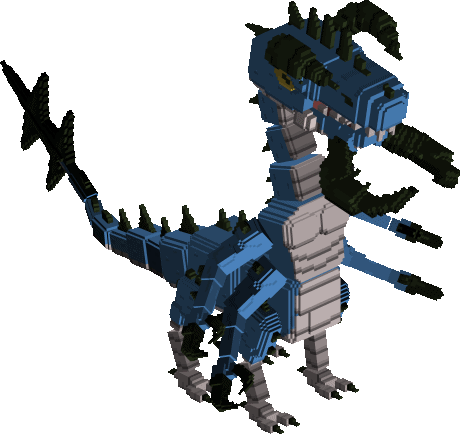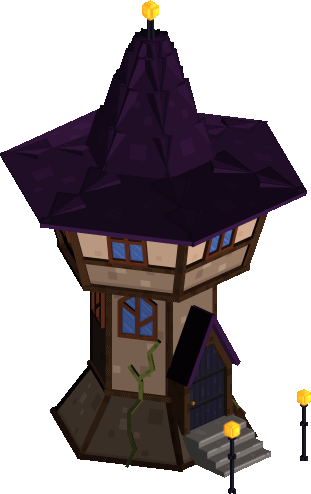Welcome to my free cryptocurrency educational series. Each part builds on the previous ones, so I suggest starting at the beginning and moving through part by part:
Cryptocurrency 101 series (core principles, social justice, blockchain tech, Bitcoin):
- Part 0 Overview of my series, who this is for, why you might consider listening to me, and how easy it is to think you understand crypto when you actually don’t.
- Part 1 Why should I care? What’s in it for me? Why is crypto important (it’s about a lot more than just making money!)?
- Part 2 How crypto actually works, why Bitcoin is valuable (even if it’s just “made up!”), and what you should know about blockchains (the tech behind them and how they could influence the future of our world)
- Part 3 How the blockchain keeps running, where new Bitcoins come from (i.e., how mining works), and concerns about Bitcoin’s environmental impact
- Part 4 How crypto offers autonomy, why it can’t be stopped, and the value of decentralization
- Part 5 How to store and use cryptocurrency, some basic cryptography, how wallets work, identity management, and the future of democracy
- Part 6 Overview of the different types of wallets, which one is best for you, what to be careful of, and why a hardware wallet might be worth the investment
Cryptocurrency 201 series (intermediate principles, Ethereum, NFT’s, DAO’s):
- Part 7 Ethereum (the #2 most popular cryptocurrency, and the one I’m most excited about), smart contracts, dapps, gas (and the high gas fee problem), Proof of Stake (PoS), and Ethereum 2.0
- Part 8 Coins vs. tokens, and some real Ethereum use cases—oracles and DEX’s
- Part 9 Intro to NFT’s (collectibles, research funding & historical significance, and music)
- Part 10 More categories of NFT’s (art, video games, virtual reality)
- Part 11 Wrapping up NFT’s (what you can actually do with them, upsides, downsides, risks)
- Part 12 DAO’s (organizations managed by algorithms, governance tokens, collective ownership, and the “network state”)
Cryptocurrency 301 series (advanced principles, DeFi, reinventing the finance world):
- Part 13 DeFi & CeFi, reinventing banking with peer-to-peer finance, stablecoins, and borrowing & lending
- Part 14 More DeFi (how Uniswap works, plus insurance, payments, derivatives, blockchains, exchanges, liquidity staking, and impermanent loss)
- Part 15 Wrapping up DeFi (why liquidity is important, LP tokens, yield farming, calculating return, yield aggregators, and major risks)
Cryptocurrency 401 series (investing, making money in crypto):
- Part 16 Intro to investing (what could go wrong, where you might fit in, and what kind of investing could be right for you)
- Part 17 Preparing to invest (how much money to put in, how to split it up to mitigate risk, setting up your wallets, buying the coins & tokens you want, and dealing with different blockchains)
- Part 18 More preparing to invest (security, understanding what price targets are realistic, and using “expected return” to choose between opportunities)
- Part 19 Specific investing options (buying and holding, index tokens, leveraged tokens, my list of coins and tokens, mining & staking, and lending)
- Part 20 Higher-risk, higher-reward opportunities (liquidity staking & yield farming, NFT’s, OlympusDAO, and Tomb Finance)
- Part 21 The single investment that’s made me the most money: StrongBlock
- Part 22 Wrapping up my seven categories of investment (including an update on StrongBlock)
- Part 23 How to invest depending on how much money you have (plus, the market dip, where my money is, and how to fit crypto into a larger investing strategy)
- Part 24 Holding coins & tokens vs. yield farming, where I’m putting my money now, big news on StrongBlock, and the future potential of crypto
- Part 25 Staying safe, preparing your taxes, avoiding scams, upgrading your security, and judging new projects
- Part 26 How to decide who to trust in the crypto world, technical analysis & market cycles, and an update on my longish-term portfolio
This is part 10 in my cryptocurrency educational series.
Part 10 Reading Time: 27 minutes
Want to listen to this post instead?
Last time, we began exploring some major categories of NFT: collectibles, research funding & historical significance, music, and generative music.
Let’s check out several more that I’m excited about: art, generative art, video game characters, in-game items, and objects in virtual reality.
Category #4: Art
Think about the Mona Lisa.
It’s an incredibly famous piece of art, so it’s very easy to find reproductions of it everywhere. If you want to see the Mona Lisa hanging in your living room, you can easily order a high-quality print online.
And yet, 8-10 million people travel to The Louvre museum each year to see it in person.
Why?
Because it’s the original, right?
Sure, but why should that matter?
Well… Because this is the actual version that da Vinci painted, so you can admire all the intricate brushwork, right?
Not really.
I’ve seen it in person. The painting is less than 3ft tall, visitors can’t get closer than 15ft, and you don’t get to stand there for more than 30 seconds. At that distance, for that amount of time, it’s hard to argue that seeing the original version offers much more than a high-quality reproduction from Amazon (here’s a $96 one that has hundreds of 5-star ratings).
Still, millions of people travel to Paris each year and then wait hours in line to see it.
As I said in the last post, we humans seem to place a high value on “the original” of something—even if a copy looks virtually the same.
Here’s where we get philosophical.
Imagine that two expert artists each spend a hundred hours creating a piece of art—one with physical paint and one with a stylus and Photoshop. Each piece evokes a powerful emotional reaction in the viewer. And each artist attended a well-reputed art school and spent a decade honing their respective craft.
Now, let me ask you this:
Is the physical piece of art more worthwhile than the digital one?
If you said yes, stop to consider what argument you could make here in light of everything I said above.
Personally, my answer is no—both pieces should be worth the same amount.
What should a piece of art be judged by? Surely, it’s things like: the artist’s skill, the piece’s novelty, the meaning or message behind it, and the viewer’s enjoyment of it. All of that applies equally well to digital art.
If that’s the case, then the digital artist deserves equal financial compensation for their work, right?
Thus far, without NFT’s, that hasn’t been the case. With physical art, a painter can charge a lot of money for the original painting, and then they can make additional money by selling cheaper prints of that painting as well.
In contrast, the digital artist who spent just as long creating their work can’t really sell an “original” because the “prints” are exactly the same. The file can simply be copy and pasted a million times.
Why shouldn’t the digital artist be able to sell an “original” too?
You probably have a knee-jerk reaction here: “This is absurd. If I can just duplicate a digital art file a million times, there is no ‘original.’ They’re all the same. One of those files should not be valued more highly than another.”
Let’s unpack that argument for a moment:
- Yes, it’s true that copies of traditional digital files are all the same.
- No, it’s not true that there is no original. There was in fact the very first file that was created before copies were made.
The philosophical and ethical questions here are: Must all versions of that digital file be valued the same? And should they be?
I’m going to argue that the answer is no to both, and I’ll argue my position through a thought experiment:
Let’s start by imagining that NFT’s don’t exist yet.
- In this pre-NFT world, a professional photographer—someone who spent many years honing their craft and who relies on their photos for their income—posts an incredible photo on their website. A photo of a rare animal in the wild—a once-in-a-lifetime type picture that would be extremely hard for anyone to replicate.
- Would you agree that it’s reasonable for that professional photographer to put a watermark on their photo and ask people to pay to receive the un-watermarked version? In other words, is it reasonable for this artist (who relies on their art to pay their bills) to request that they be paid for their work? I’m hoping you’ll say yes (at least as long as we live in a capitalist system).
- Ok, what if someone uses a sophisticated piece of software to remove the watermark, and they post the photo on Reddit for free for everyone to download? Alternatively, let’s say that the photographer sends buyers the non-watermarked version once they pay for it, and one of those buyers decides to just share the non-watermarked version for free on Reddit?
- Anyone who downloads that photo on Reddit now has a photo that’s indistinguishable from the one that was being sold by the artist. Their work is now devalued, and there’s no reason for anyone to pay money for it other than out of kindness.
- Was it ethical for those people to post the non-watermarked version on Reddit? I’m hoping you’ll say no. Why not? Because it went against the wishes of the artist. It went against the “social contract” of good behavior in a civilized society.
Now, enter NFT’s.
- What if, instead, the artist could use the smart contract functionality built into NFT’s to make that implicit social contract explicit? In other words, a potential buyer would see the watermarked photo on the website, click the buy button to pay some ETH, and then the non-watermarked version would appear in their Ethereum wallet.
- Even if they gave away that NFT on Reddit, only a single person could claim it. So, it wouldn’t lose its value. And if anyone claimed to have the paid-for NFT version of this photo, you could confirm its authenticity by checking the blockchain.
- Of course, someone could just buy the NFT, then take a screenshot of the non-watermarked image and share that on Reddit. But anyone who downloaded that would know that they were going against the artist’s explicit wishes, and they wouldn’t be able to prove that they had bought it—it would be clear that they were only using the stolen version. (Plus, if the NFT were animated or more complex in some other way, as we’ll discuss later, a simple screenshot wouldn’t do it justice.)
- To be clear, all NFT’s don’t have to be one-off originals either. Let’s say that photographer decided to offer three different NFT versions of their photograph (remember: NFT’s are programmable!). For example, let’s say…
- The “gold” version comes with the original RAW camera file along with an audio journal the photographer made as she was planning the shot. It can only be claimed once and costs 1 ETH.
- The “silver” version comes with the full-resolution, non-watermarked JPEG file, signed by the photographer (and, this signature is unforgeable and provably real since each pixel of it is cryptographically encoded into the NFT). This version of the NFT can be claimed 50 times and costs 0.05 ETH.
- The “bronze” version comes with a medium-resolution, non-watermarked JPEG file. It can be claimed an unlimited number of times and is free (minus the gas transaction fee to claim it).
What do you think of that? Does that “gold, silver, bronze” tier system still feel ridiculous, or could you see how it might make sense?
Maybe this sounds awesome to you, or maybe you’re still skeptical. But please try to put yourself in the shoes of digital photographers and artists who rely on their work for their income but regularly have it stolen or devalued.
Couldn’t this be a huge breakthrough for them?
(Here’s an interesting Twitter thread by someone who owns a physical art gallery arguing why NFT’s are great for artists.)
Let’s build even further on all this. Since Ethereum allows for digital assets to be fully programmable, a lot more could be possible with NFT art.
Here are some ideas that should be fully possible with current technology:
- Dynamic scenes: Digital NFT paintings that have animated elements or even sounds.
- External input: Art that adjusts based on data from the real world (using the oracle services we touched on in Part 8). For example, the weather in the painting might automatically adjust based on real-world weather conditions, or even based on the stock market rising or falling or the artist’s favorite sports team winning or losing. Maybe balloons appear on the anniversary of the day the owner purchased it.
- History: Maybe every time a painting changes hands, the name of the new owner (or at least their wallet address) is somehow incorporated into it, like by being etched into a wall on a building in the scene. That way, anyone who’s ever owned it forever remains a part of it.
- Compensation: The artist might set it up so that, whenever the piece is sold in the future, one cut of the sale automatically goes to them and another to their favorite charity. (I also want to emphasize here how amazing it is that a piece of art—even one costing millions of dollars—can change hands in a completely secure way that requires no middle man, no legal contracts, and minimal transaction fees. That’s a big deal compared to the elaborate auctions that typically take place around expensive art.)
By the way, setting up an NFT probably sounds difficult, but it doesn’t have to be. For simple ones at least, you can do it even without any programming knowledge by using a service like Rarible. In that case, it’s as simple as uploading your digital asset and going through just a few more steps that a non-technical person could figure out.
Here’s a good example of dynamic NFT art:
Beeple is one of the most famous artists in the NFT space. In March 2021, one of his NFT’s sold at Christie’s auction house for $69 million. Below is a different piece called Crossroad, which sold for $6.6 million. What’s fascinating about Crossroad is that the art itself changed based on real-world events.
When it was originally purchased before the 2020 US presidential election, it depicted an animated scene of Biden and Trump locked in combat. Then, it was programmed to detect who won the election—two potential animated scenes were possible, and when the election results came in, it changed to the one created for a Biden win. From then on, it permanently depicted the Biden victory version, and it’s impossible for the owner to switch it back.
Imagine all the possibilities for programmable art that can automatically react to events that happen in the real world.
Category #4a: Generative Art
Generative art refers to art where either a part of the piece or the entire thing is created by a computer—or, more specifically, by an algorithm or set of rules programmed in by the artist.
You might be imagining some kind of simplistic pattern-type art that was clearly created by a machine. But that’s not at all what high-quality generative art looks like nowadays.
Below are some of my favorite pieces by the artist Tyler Hobbs.
The majority of this art was created by computer programs that Tyler coded. Amazingly, he didn’t plan out what these pieces would look like in advance. Certainly, they’re not random though, and this isn’t the same thing as an AI creating art.
Instead, these are the result of a human’s artistic skill and painstaking experimentation. What’s perhaps most amazing is that people like Tyler are so skilled in both art and computer programming that they can turn the rules of art into algorithms.
With this type of art, it’s even possible to add in fine details that are more intricate than a human is capable of producing—all while still replicating a hand-drawn aesthetic. Tyler Hobbs specializes in this intersection of hand-drawn and computer-generated:
Below is the Ringers collection by artist Dmitri Cherniak.
The algorithm here is designed to “wrap a string around a set of pegs.” What’s also cool about Ringers is that they’re fully on-chain, meaning that all the code to create each image is stored on the Ethereum blockchain. In other words, the NFT isn’t just linking to an image stored on a server somewhere—the blockchain itself has all the necessary instructions to create the image.
Another interesting thing here is that each unique Ringers image was generated at the time of purchase. The buyer didn’t actually know what they were getting. They just initiated a transaction and the algorithm created their brand new unique image right at that moment.
Generative art will make fine art more accessible and give artists more options
Typically, there are two ways you can buy art:
- You can purchase an original. The upside is that you now own something completely unique. The downside is that it tends to be quite expensive because a lot of time and effort went into this single object.
- You can purchase a reproduction (i.e., a copy) or a limited edition print (i.e., another iteration of that piece of art created by the artist through a method like screenprinting or etching). The upside is that these are more affordable, but the downside is that they’re less unique.
With generative NFT’s, an artist can offer an option in between:
They could create the main piece that’s completely unique, and then they could program in modifications to create a set of limited edition prints that are each truly unique.
Those prints would be less work for the artist and more affordable for the buyer. But, all the buyers would still get a one-of-a-kind piece of art.
Couldn’t the artist cheat you? How can you trust that an NFT is truly unique?
Well, the first line of defense is that you can easily search the blockchain for an NFT’s hash to make sure there’s only one of them. (Remember that a hash is a long string of letters and numbers that represents any digital thing, like a cryptographic key, a file on your computer, or an NFT. The string is long enough that it would be virtually impossible for two different digital things to end up with the same hash. So, comparing the hashes of two NFT’s is one way to see if they’re identical.)
But, as far as I can see, there would technically be nothing to stop an artist from doing this:
- Create an original piece of digital art
- Convert it to an NFT and sell it as a one-of-a-kind piece
- Duplicate the original piece of art but change one pixel so that it ends up forming a different hash
- Create a second NFT that’s virtually the same as the “one-of-a-kind” one
However, I haven’t seen that happen yet, and it doesn’t seem like a big risk to me. Here’s why:
It’s similar to how things work in the traditional art world. Recreating a one-of-a-kind physical painting would of course be a lot of work. But what about something like woodblock prints? An artist could make a “limited edition” set of 10 woodblock prints, all created using the same physical woodblock. They’d sell them as “1 of 10,” “2 of 10,” etc., promising that no more would be made. But theoretically, once all ten had been purchased, unless they destroyed the woodblock, they could simply print ten more.
I’m not at all an art expert, so maybe that kind of thing happens. But my guess is that it’s prevented by a combination of ethics and the artist’s reputation. If collectors realized that an artist was creating more prints of a supposed “limited edition,” I would expect their work to go down in value and their reputation to be ruined.
So, if the question is “How can you trust that an NFT is truly unique?” one answer is reputation.
A second answer is the “generative art” modality that I mentioned earlier. Generative art like DeafBeef or Ringers is created right when the buyer purchases it. The algorithm to create the art is seeded with a variable like a random number based on the exact time of purchase. So, even if the same person bought more than one Ringers piece, it would be virtually impossible to ever get the same one twice (i.e., with the number of variables involved, I imagine it would be something like a one-in-trillions chance).
So, the second answer is: Generative art is guaranteed to be unique.
Where could this kind of thing lead in the future?
Today, you can walk into any Ikea and see a huge assortment of posters and art reproductions available for sale at reasonable prices. But each of them is one of thousands of exact copies that other people own. So, it’s not quite as exciting as having a unique piece of art on your wall.
What if Ikea had a machine there that allowed you to select one of the pieces of art that you like and then it would modify it to create a unique version for you? And what if it guaranteed it would never be duplicated—that you would own a completely unique piece for a reasonable price? Then, it would print out that unique piece for you right there, and maybe it would even send a digital NFT version of it to your crypto wallet too.
With me so far?
Now, imagine a future world where 3D printing is even more advanced and affordable: What if Ikea had customizer machines not only for art but for furniture?
What if this could apply to architecture, video games, music, clothing, and beyond?
Category #5: Video game characters, in-game items, and objects in virtual reality
Virtual items in video game worlds are already big business.
Over $40B a year is spent on cosmetic upgrades for game characters—new outfits, accessories, hairstyles, and so on.
If you’re not a gamer, it might seem ridiculous to pay real money for a unique outfit in a video game.
To help explain the appeal of this stuff, ask yourself why someone would buy a Rolex in real life. Below are a few common answers I’ve read, and I’ll point out how each could apply to video game items too:
- People buy Rolexes as a status symbol, or to impress people in their peer group—because it says something about who you are.
- Well, if your peer group is largely people who spend time in online virtual worlds, how could it be ridiculous to spend money to impress them in the same way? If the gaming experience is an important part of your life, why not accessorize your character to personalize it so it better conveys something about who you are?
- People buy Rolexes for the sake of nostalgia, or to commemorate an important time or event in their life.
- Some people literally spend half their lives in online worlds nowadays. So why not commemorate their time there with a meaningful in-game purchase that reminds them of happy memories?
- People buy Rolexes as an investment.
- This will be possible with virtual items as well once they’re NFT’s.
But people already purchase in-game items today, so how else would things be different if those items were NFT’s?
- Currently, when you buy an in-game item, you’re buying it from the game company. Imagine a future where in-game NFT’s are designed by artists and fellow players. Maybe the game company gets a cut of the sale, but most of it would go to the maker. More on this below.
- Currently, anything you buy only exists within that one video game. What if future video games were built on open, decentralized standards so that you could bring your items with you to other game worlds, even ones made by other game companies? As you’ll see below, those decentralized standards are already well into development.
- Currently, it’s a violation of the terms of service of most games to sell your character or account to someone else. Even if you put thousands of hours into improving your character, you could be completely banned for trying to profit off all that hard work when you want to move on from that game.
- What if when you owned something in a video game world, you truly owned it—not just a temporary license to it? Game worlds have become increasingly complex and important parts of many of our lives, and they deserve to be treated as such. If you’ve put a huge amount of time into obtaining an in-game item and there’s an eager market of people wanting to pay you for it, shouldn’t you be allowed to sell it?
Here’s an example of one of the most promising online worlds where everything is an NFT:
The Sandbox is an emerging virtual world similar to Minecraft, and it’s attracted investments from major game companies like Square Enix.
Since The Sandbox is built on the blockchain, players create virtual characters and items that can be bought and sold for cryptocurrency that has real value. They can even buy up land and real estate in the virtual world to build buildings on or create gameplay experiences around.
These objects, characters, and pieces of land are all NFT’s:
Furthermore, the company’s goal is to develop the actual gameplay with the help of the players and content creators. If you own land in the game world, you’ll be able to design what types of experiences and game mechanics apply when players enter your domain.
Here’s an example of a creature, a building, and a parcel of land (if you click each one, you can see the actual NFT, including who created it, how much it sells for, and what in-game attributes it has):
Sure, those graphics are a little simplistic right now, but that’s because they want everything to be customizable and easy to build with—like LEGO blocks rather than highly complex sculpting.
As the technology continues to advance, we’ll very likely move toward something more like the highly realistic metaverse from the book/movie Ready Player One.
Beyond just video games though, imagine where online world and virtual reality technology is going to be in 5-10 years.
If current trends continue, many of us will be spending a lot more time in virtual worlds—not just for playing games, but for hanging out with friends, going to school, and working.
In the real world, you could display your NFT art in a digital frame on the wall. And in the virtual world, you could put that same piece of artwork up on your virtual home’s wall. You’ll probably even own virtual couches and tables (all NFT’s), whose creators were compensated when you bought them.
This will likely be big enough that the creators won’t just be amateurs either—you’ll have top real-world designers creating clothing, wallpaper, handbags, and so on in the virtual world. Here’s an interesting article in Vogue that touches on some of this.
Does this stuff still seem ridiculous to you?
Think about how little time you spent on your smartphone 10 years ago compared to today, and how much time you spend on Zoom now compared to 2 years ago. Technology advances very quickly, and once VR technology is high quality, comfortable, and affordable, it’ll be a much more enjoyable way to hang out with faraway friends and family than a Zoom chat.
Then, once you’re getting real use out of virtual objects, why shouldn’t those objects be NFT’s to represent their real value and to ensure their creators get properly compensated?
Finally, if you still think this whole “metaverse” (i.e., virtual world) thing is silly, check out Mark Zuckerberg’s announcement from July 22, 2021: “Over the next five years or so, in this next chapter of our company, I think we will effectively transition from people seeing [Facebook] as primarily being a social media company to being a metaverse company.“
This is going to be huge.
Almost done with NFT’s! In the next part, we’ll take a look at what you can actually do with them, where to buy them, as well as some upsides, downsides, and risks in the NFT space.
Part 11: Wrapping up NFT’s (what you can actually do with them, upsides, downsides, risks)
P.S. Crypto is one of my newest passions, but my overarching focus in life is personal growth and intentional living. Do you want help with challenges like confidence, decision-making, or idea overwhelm? I’m a transformation coach who helps analytical thinkers get unstuck, find consistent motivation to take action, and design their life purpose. Read more about me here or my coaching practice here.

